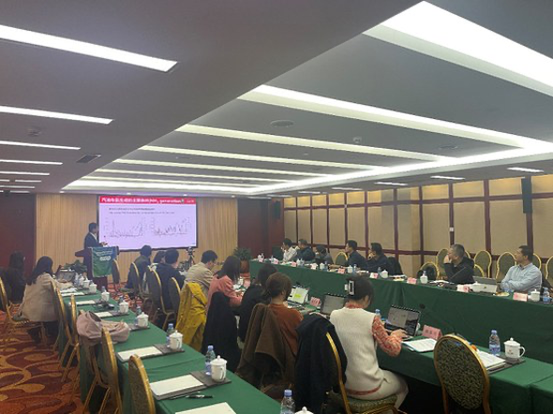Experts Argue for More Research and Pilots on Ammonia Mitigation
On October 31, 2022, with the support of Energy Foundation China (EF China), the China Clean Air Policy Partnership held an academic salon for 700 experts, discussing sources and environmental impacts of atmospheric ammonia emissions in Chinese cities. Atmospheric ammonia oxidation products are a significant component of particulate pollution known as PM2.5, which is still a serious problem in many parts of the country. Research and mitigation policies for ammonia are far from enough. The salon was held to help put forward viable technical and policy solutions.

More than 700 experts attend the salon titled “Sources and Environmental Impacts of Atmospheric Ammonia Emissions in Cities” salon on-site and online on October 31, 2022. Photo by the China Clean Air Policy Partnership Secretariat.
Six scholars from environmental, agricultural, atmospheric physical, geographical, and vehicle backgrounds gave academic presentations, covering topics such as source analysis of atmospheric ammonia and light-duty vehicles’ ammonia emissions. The experts agreed that more attention should be paid to ammonia reductions in China, including strengthened scientific research on its causes and impacts, monitoring methods that are combined with model simulation, precise source tracking, and refined and dynamic emission inventories. According to the experts, ammonia mitigation pilots should be carried out in key cities as well, with feasible emission reduction pathways for different types of cities and regions, in an effort of advancing policy analysis. Liu Xin, Director of the Environmental Management Program of EF China, said that the interactions between ammonia and other air pollutants should also be systematically studied. By strengthening the study of potential reuse of ammonia as an energy resource, the synergistic effect of reducing criteria and carbon pollutants may also be optimized, he said.
More than 700 scholars from universities and other research institutes participated in the online and on-site meeting, including Chai Fahe, Chief Scientist of the Chinese Research Academy of Environmental Sciences; Chen Jianmin, Distinguished Professor of the Department of Environmental Science and Engineering at Fudan University; Ding Yan, Director of the State Key Laboratory of Environmental Protection for Vehicle Pollution Control and Simulation; Ge Maofa, Researcher of the Institute of Chemistry at the Chinese Academy of Sciences; Han Yuhua, Associate Researcher of the Beijing Municipal Research Institute of Eco-Environmental Protection; Huang Cheng, Director of the Institute of Atmospheric Environment at Shanghai Academy of Environmental Sciences; Huang Xin, Professor of the Institute of Atmospheric Sciences at Nanjing University; and Lei Yu, Director of the Institute of Atmospheric Sciences at the Chinese Academy of Environmental Planning.



